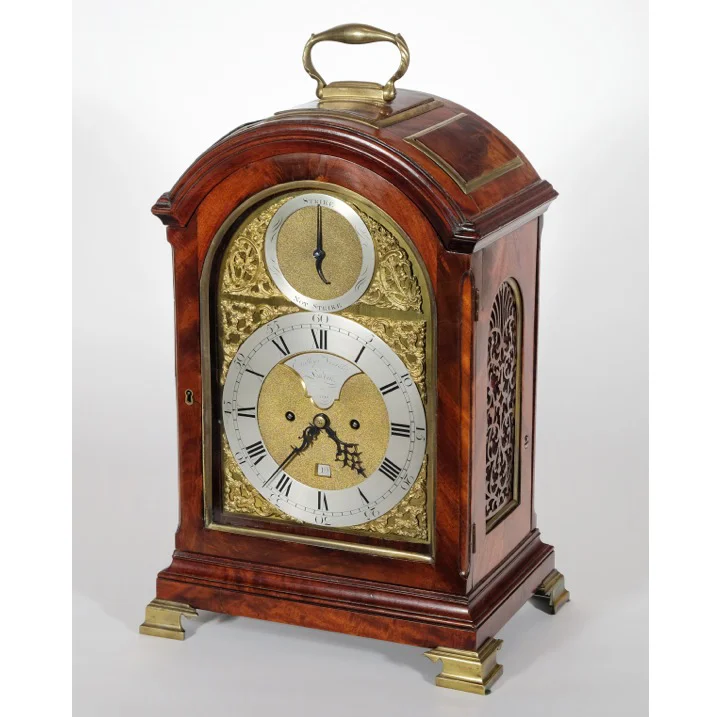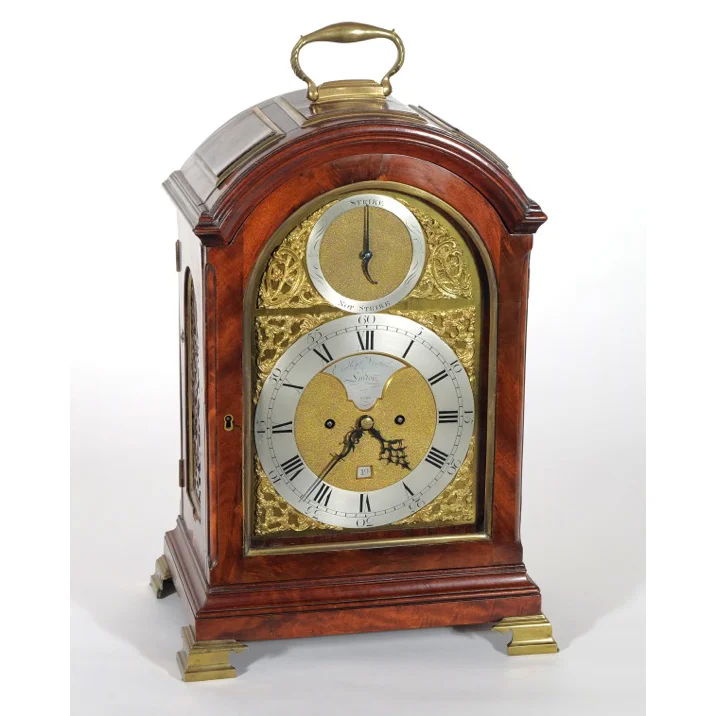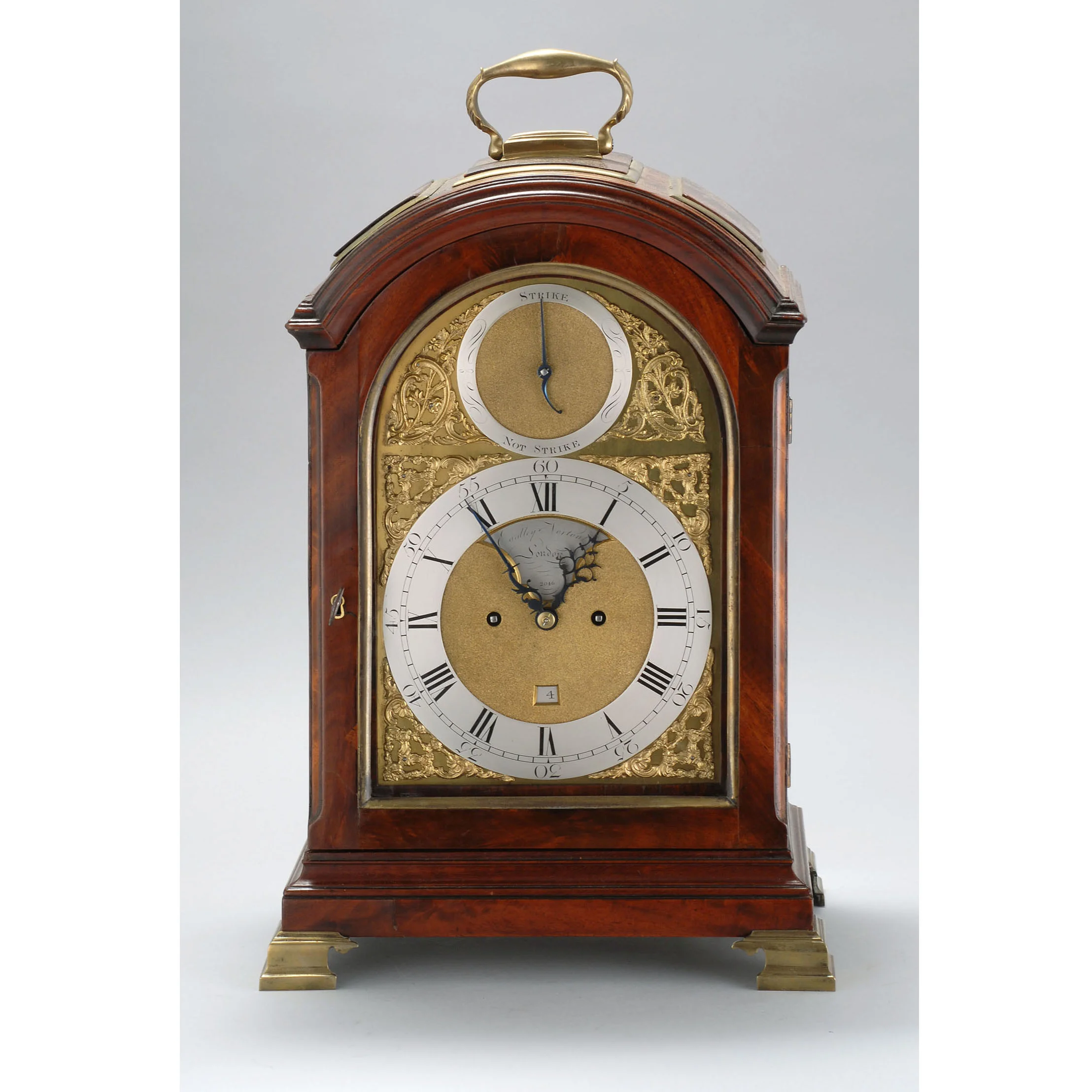Eardley Norton (1728-1792), London: Mahogany 8 day Table Clock
Eardley Norton (1728-1792), London: Mahogany 8 day Table Clock
Eardley Norton (1728 - 1792): Royal Clockmaker to George III
A mahogany triple pad top table clock with 8-day striking movement by Eardley Norton, London.
The case with a moulded cornice and base; a brass handle to the centre pad, The pads, arched side panels fitted with sound frets, and both front and rear doors all with brass mouldings. The moulded base raised on ogee brass feet.
The 8-day movement striking the hours on a single bell and with pull-repeat work. Anchor escapement. The 7 inch arched dial with strike-silent subsidiary dial in the arch; the silvered chapter-ring engraved with Roman and Arabic numerals and the finely matted ground with date aperture in the lower section, the upper section with a shaped inset plaque bearing the signature "Eardley Norton / London / 2046"; gilt foliate spandrels surround the chapter ring; the backplate engraved with elaborate ribbons and rolled foliage.
Height - 47 cm (18 1/2") Width - 28.6 cm (11.25") Depth - 20 cm (8")
Eardley Norton (1728 - 1792)
Eardley Norton was from yeoman stock, who possibly farmed at Rigsby, Lincolnshire. He apprenticed as a clockmaker 25 May 1743 to Robert Dawson of Alford. He is listed as working at 49 St. John’s Street, Clerkenwell between 1760 and 1794. He was member of the Clockmakers’ Company being freed in 1770 and remained a member until his death in 1792. He applied for a patent for a new type of striking mechanism for both clocks and watches on 31 August 1771.
He enjoyed a reputation as a very skilled clockmaker. He is best known for making complex timepieces, sometimes with musical and astronomical movements for the export markets. This included Turkey and the Far East. The most notable of which may be his four dial astronomical clock which he made to stand in the library of Buckingham House, now Buckingham Palace. In addition, there are clocks made by him in the Royal Collection, numerous museums worldwide and some of the world’s finest collections including a bracket clock in the Virginia Museum, a very small cartel clock in the National Museum of Stockholm, a marine chronometer in the Ilbert Collection at the British Museum in London and an elaborate automaton clock with organ in the Palace Museum located in Peking. He married Mary Swinnerton of Oswestry, and after retirement lived at Stonegrove House (no longer existing), Little Stanmore, Middlesex, in the parish of Whitchurch. On his death, his business was taken over by the partnership of Gravell and Tolkien. He is buried at St. Lawrence's church in Little Stanmore.





